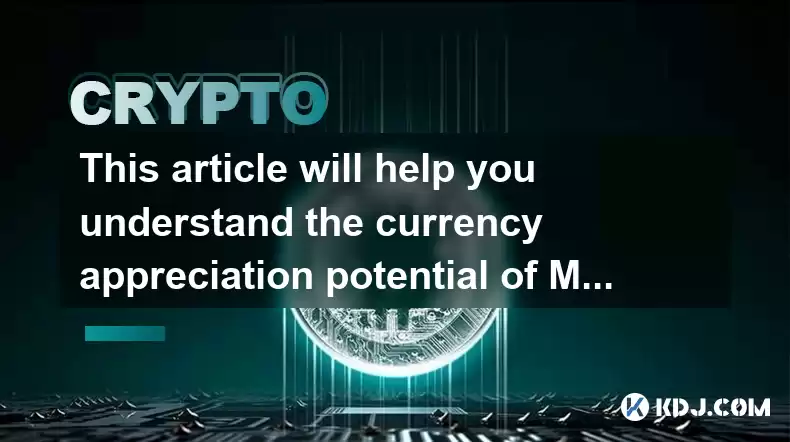-
 Bitcoin
Bitcoin $119900
1.12% -
 Ethereum
Ethereum $4599
9.32% -
 XRP
XRP $3.282
4.63% -
 Tether USDt
Tether USDt $0.9998
-0.02% -
 BNB
BNB $833.4
3.91% -
 Solana
Solana $193.3
10.47% -
 USDC
USDC $0.9999
-0.01% -
 Dogecoin
Dogecoin $0.2366
5.64% -
 TRON
TRON $0.3534
2.64% -
 Cardano
Cardano $0.8477
9.54% -
 Chainlink
Chainlink $23.33
10.42% -
 Hyperliquid
Hyperliquid $45.59
5.29% -
 Stellar
Stellar $0.4509
5.00% -
 Sui
Sui $3.888
6.46% -
 Bitcoin Cash
Bitcoin Cash $620.4
7.20% -
 Hedera
Hedera $0.2613
6.53% -
 Ethena USDe
Ethena USDe $1.001
0.01% -
 Avalanche
Avalanche $24.75
8.33% -
 Litecoin
Litecoin $130.2
8.10% -
 Toncoin
Toncoin $3.541
5.12% -
 UNUS SED LEO
UNUS SED LEO $9.079
1.11% -
 Shiba Inu
Shiba Inu $0.00001367
5.60% -
 Uniswap
Uniswap $11.55
4.73% -
 Polkadot
Polkadot $4.181
8.43% -
 Cronos
Cronos $0.1664
0.63% -
 Dai
Dai $0.9998
-0.03% -
 Ethena
Ethena $0.7980
2.17% -
 Pepe
Pepe $0.00001225
8.94% -
 Bitget Token
Bitget Token $4.452
1.25% -
 Aave
Aave $317.1
8.17%
This article will help you understand the currency appreciation potential of Maple Token (MPL)
To predict future price trends in the crypto market, assess fundamental factors like loan origination volume, technical indicators such as moving averages and RSI, and market drivers including adoption, partnerships, and regulatory changes.
Dec 25, 2024 at 06:17 pm

Key Points:
- Understanding Market Drivers and Fundamentals
- Assessing Technical Indicators
- Predicting Future Trends
- Monitoring Correlation and Risk
- Developing a Strategic Investment Plan
Understanding Market Drivers and Fundamentals
Maple Token (MPL) is the native token of the Maple Finance platform, a decentralized lending protocol focused on the unsecured lending market. Its value is primarily driven by the platform's:
- Loan Origination Volume: The amount of loans facilitated by Maple Finance directly impacts MPL's value. Higher loan volume indicates increasing demand for the platform, leading to token appreciation.
- Loan Repayment Rates: Timely and consistent loan repayments ensure stability and confidence in the Maple ecosystem, boosting MPL's price.
- Liquidity and Trading Volume: A healthy liquidity pool and active trading volume enhance MPL's attractiveness to investors, increasing its value.
- External Market Conditions: Broader cryptocurrency market trends, global economic factors, and regulatory changes can also affect MPL's price.
Assessing Technical Indicators
Technical analysis uses chart patterns and mathematical indicators to identify potential entry and exit points in a cryptocurrency's trading cycle. Some key technical indicators to consider for MPL include:
- Moving Averages: Long-term moving averages (e.g., 200-day MA) provide support and resistance levels.
- Bollinger Bands: These measure volatility and can indicate potential breakouts or pullbacks.
- Relative Strength Index (RSI): The RSI indicates overbought or oversold conditions, helping investors time entries and exits.
- Support and Resistance: Identifying key support and resistance levels on the chart allows investors to determine potential areas for price reversals.
Predicting Future Trends
Predicting future trends in MPL's price involves considering both fundamental and technical factors. Key elements to assess include:
- Market Sentiment: Positive news, project updates, and community engagement can boost investor confidence and drive MPL's price upwards.
- Adoption and Partnerships: Growing adoption of Maple Finance's platform and strategic partnerships with other projects can enhance its value.
- Competition: Monitoring competitors' performance and market share can provide insights into MPL's competitive advantage.
- Regulatory Environment: Changes in regulatory frameworks can impact demand for decentralized lending platforms like Maple Finance.
Monitoring Correlation and Risk
Understanding MPL's correlation with other cryptocurrencies and the overall market is essential for risk management. Key principles:
- Beta Value: The beta value measures correlation with the broader market. A beta of 1 indicates in-step movement with the market, while a beta above 1 indicates stronger volatility.
- Risk Diversification: Investing in a diversified portfolio of cryptocurrencies can reduce risk by spreading exposure across assets with varying correlations.
- Stop-Loss Orders: Placing stop-loss orders at predefined levels can limit potential losses in case of sudden price downturns.
Developing a Strategic Investment Plan
A well-defined investment strategy is crucial to navigate the volatility of the cryptocurrency market. Steps include:
- Define Investment Goals: Determine the time horizon, risk tolerance, and return expectations for your investment.
- Conduct Due Diligence: Thoroughly research Maple Finance and MPL, understanding its technology, team, and market opportunities.
- Allocate Funds Wisely: Divide your investment capital into different tranches, allowing for dollar-cost averaging and reducing risk exposure.
- Monitor and Adjust: Regularly monitor MPL's price and market conditions, making adjustments to your investment strategy as needed.
FAQs
- What is the potential return on investment (ROI) for Maple Token (MPL)?
The ROI depends on various factors such as market conditions, project performance, and holding period. Historical performance cannot guarantee future returns. - What are the risks associated with investing in MPL?
Risks include price volatility, platform security breaches, and regulatory changes. Diversification and risk management strategies should be employed to mitigate these risks. - Is MPL a good investment for the long term?
Whether MPL is a good long-term investment depends on your individual circumstances and investment goals. Consider the project's fundamentals, market sentiment, and your risk tolerance. - What are the benefits of holding MPL?
Potential benefits include staking rewards, governance rights, and participation in the growth of the Maple Finance ecosystem. - How do I buy and store MPL tokens?
MPL can be purchased on decentralized exchanges (DEXs) using popular cryptocurrencies like ETH or USDC. It can be stored in a hardware wallet or reputable digital asset exchange.
Disclaimer:info@kdj.com
The information provided is not trading advice. kdj.com does not assume any responsibility for any investments made based on the information provided in this article. Cryptocurrencies are highly volatile and it is highly recommended that you invest with caution after thorough research!
If you believe that the content used on this website infringes your copyright, please contact us immediately (info@kdj.com) and we will delete it promptly.
- Unich's OTC Exchange: Surging with $1.2B Volume – What's the Hype?
- 2025-08-13 02:50:11
- MoonBull's Explosive Moves: Your Crypto Whitelist Ticket to Ride!
- 2025-08-13 02:30:11
- MAGACOIN Finance: Don't Miss the Presale Bonus!
- 2025-08-13 02:30:11
- Trump's Crypto Kingdom: $2.4 Billion and Counting
- 2025-08-13 02:50:11
- Solana, LSTs, and SEC Approval: A New Dawn for Crypto?
- 2025-08-13 02:55:12
- Bitcoin's Profit Surge: Unpacking the BTC Value Boom
- 2025-08-13 02:55:12
Related knowledge

How to purchase Aragon (ANT)?
Aug 09,2025 at 11:56pm
Understanding Aragon (ANT) and Its PurposeAragon (ANT) is a decentralized governance token that powers the Aragon Network, a platform built on the Eth...

Where to trade Band Protocol (BAND)?
Aug 10,2025 at 11:36pm
Understanding the Role of Private Keys in Cryptocurrency WalletsIn the world of cryptocurrency, a private key is one of the most critical components o...

What is the most secure way to buy Ocean Protocol (OCEAN)?
Aug 10,2025 at 01:01pm
Understanding Ocean Protocol (OCEAN) and Its EcosystemOcean Protocol (OCEAN) is a decentralized data exchange platform built on blockchain technology,...

How to invest in Kyber Network Crystal v2 (KNC)?
Aug 12,2025 at 05:21pm
Understanding Kyber Network Crystal v2 (KNC)Kyber Network is a decentralized liquidity hub built on the Ethereum blockchain that enables instant token...

Where can I buy UMA (UMA)?
Aug 07,2025 at 06:42pm
Understanding UMA and Its Role in Decentralized FinanceUMA (Universal Market Access) is an Ethereum-based decentralized finance (DeFi) protocol design...

What exchanges offer Gnosis (GNO)?
Aug 12,2025 at 12:42pm
Overview of Gnosis (GNO) and Its Role in the Crypto EcosystemGnosis (GNO) is a decentralized prediction market platform built on the Ethereum blockcha...

How to purchase Aragon (ANT)?
Aug 09,2025 at 11:56pm
Understanding Aragon (ANT) and Its PurposeAragon (ANT) is a decentralized governance token that powers the Aragon Network, a platform built on the Eth...

Where to trade Band Protocol (BAND)?
Aug 10,2025 at 11:36pm
Understanding the Role of Private Keys in Cryptocurrency WalletsIn the world of cryptocurrency, a private key is one of the most critical components o...

What is the most secure way to buy Ocean Protocol (OCEAN)?
Aug 10,2025 at 01:01pm
Understanding Ocean Protocol (OCEAN) and Its EcosystemOcean Protocol (OCEAN) is a decentralized data exchange platform built on blockchain technology,...

How to invest in Kyber Network Crystal v2 (KNC)?
Aug 12,2025 at 05:21pm
Understanding Kyber Network Crystal v2 (KNC)Kyber Network is a decentralized liquidity hub built on the Ethereum blockchain that enables instant token...

Where can I buy UMA (UMA)?
Aug 07,2025 at 06:42pm
Understanding UMA and Its Role in Decentralized FinanceUMA (Universal Market Access) is an Ethereum-based decentralized finance (DeFi) protocol design...

What exchanges offer Gnosis (GNO)?
Aug 12,2025 at 12:42pm
Overview of Gnosis (GNO) and Its Role in the Crypto EcosystemGnosis (GNO) is a decentralized prediction market platform built on the Ethereum blockcha...
See all articles

























































































